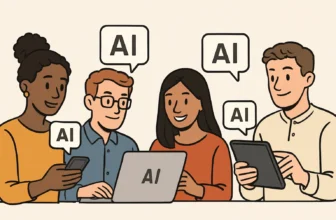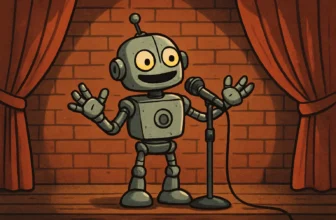
Why AI is the New MVP in Football Scouting
What if I told you a computer could spot the next Messi before your favorite club even noticed him? Sounds like something out of a sci-fi flick, right? But trust me, it’s not. AI in football is already rewriting the rules—especially when it comes to football scouting.
Now, if you’re like me, you probably grew up watching scouts scribbling notes on the sidelines while eyeing some 15-year-old prodigy. That eye test? It’s still around. But now it’s being turbocharged by artificial intelligence—and the results are game-changing.
Here’s the thing: human scouting has always had its limits. Scouts can’t be everywhere at once. There’s only so much footage they can watch and only so many metrics they can track. And, let’s be real, unconscious bias can sneak in. We’ve all heard the stories—players overlooked because they didn’t “look the part.”
Enter AI. Imagine software that scans thousands of matches across countless leagues, breaking down performance data to pin-point hidden gems. That underground striker from a second-tier league in Portugal? AI spotted him. That stat that only shows up at 3am on a spreadsheet? AI flagged it first.
So How Exactly is AI Flipping the Scouting Game?
- Massive data crunching: AI ingests years’ worth of game footage, player stats, and biometric data. It doesn’t blink. Ever.
- Objective predictions: Machine learning models analyze traits like speed over time or tactical decision-making—not just highlight reels.
- Scouting overlooked markets: Clubs are using AI to tap into regions with less visibility but untapped talent pools (think Africa, Asia, South America’s lesser-known divisions).
Personally, I was amazed when I read about Brentford FC’s data-driven recruitment model. They lean heavily on predictive analytics—as in, they actively avoid big-name players and instead rely on data recommendations. And guess what? It works. They’ve climbed into top-tier football while spending a fraction of what others have. Talk about ROI!
Here’s a wild stat: According to a report by Stats Perform, clubs using AI tools can reduce player acquisition risks by up to 30%. That’s not just money saved—it’s potential trophies won.
What This Means for You (and the Beautiful Game)
If you’re a fan, this means your club can compete smarter—even if it doesn’t have deep pockets. If you’re inside a club, now’s the moment to integrate AI into your talent pipeline. No, you don’t have to replace scouts—you empower them. Blend the best of human instinct and machine precision.
Football is evolving, and AI in football scouting isn’t just a trend—it’s the new normal. We’re in the era where data-driven insights help build championship-winning squads. So next time a “no-name” player lights up the Premier League, don’t be surprised. Chances are, AI saw it coming.
The Traditional Scouting Limitations
Did you know that Jamie Vardy was playing non-league football until he was 25? Yep, while most Premier League stars were training in elite academies, Vardy was out grinding for Stocksbridge Park Steels. Wild, right?
Stories like that aren’t just feel-good underdog tales—they’re red flags waving at the old-school football scouting system. For decades, scouting relied heavily on who you knew, where you were, and honestly, a lot of gut feeling. And while there’s something romantic about a scout “discovering” a player in the rain on a dodgy pitch somewhere, it’s also… really flawed.
The Problem with Traditional Scouting
I’ve talked to folks in the grassroots football scene—parents, coaches, even aspiring players—and one thing always comes up: “Unless your kid knows someone, forget it.” That’s harsh, but it’s real. Traditional scouting is limited by geography, bias, and access. Scouts can’t be everywhere, and a lot of decisions are made through networks that are, frankly, gatekept.
Let’s break it down:
- Biases: Scouts—being human—bring personal bias. They might overlook someone because they’re too short, too skinny, or playing for a club that hasn’t produced talent before.
- Limited reach: Smaller clubs and remote regions just don’t get the same attention. If you’re not playing in a hotspot or a high-profile academy, your chances drop dramatically.
- Overworked scouts: One human watching hundreds of players can only retain so much. Brilliant performances can go unnoticed on a bad day.
Talents That Slipped Through the Net
And it’s not just Vardy. Think Didier Drogba—undiscovered until his 20s. Or Miroslav Klose, working as a carpenter before becoming Germany’s all-time top scorer. Even Riyad Mahrez was rejected by clubs because he looked too frail. Crazy, right? These aren’t one-off flukes—they’re evidence that the system misses gems. Regularly.
So what can we learn from this?
Actionable Takeaways
- Widen your lens: Scouting teams need to look beyond traditional feeder clubs. There’s talent in every postcode. If clubs can’t physically go wider, technology needs to do it for them.
- Track non-standard metrics: Some players don’t shine on a stat sheet—but AI can help measure “invisible” traits like positioning, pressure, and decision-making in ways humans might overlook.
- Mitigate human bias: Embrace hybrid models where human scouts use AI data as a second opinion—or even a lead to scout new players they wouldn’t otherwise find.
Looking Forward
Here’s the good news: knowing where traditional scouting falls short is actually a superpower. Because now? We have the tools to fix it. AI doesn’t just fill the gaps—it opens doors we didn’t even know existed. From Ghana to Glasgow, it’s leveling the playing field.
So next time you hear about a 19-year-old wonderkid popping up from nowhere, remember—they were probably there the whole time. We just weren’t looking in the right places. But now? AI is about to change all that.
AI Algorithms: Game Changers in Scouting
Did you know AI spotted Erling Haaland’s potential at just 15—before he made headlines? Crazy, right? But that’s exactly where football scouting is headed. And if your club’s still relying mainly on gut instinct and outdated spreadsheets, well… it might be time to rethink things.
We’ve all romanticized the old-school scout with a weathered notebook sitting in the bleachers, whispering “that kid’s got something.” Don’t get me wrong—that instinct is still gold. But by itself? It can miss things. Hidden gems. Late bloomers. Or simply players dominating leagues that aren’t even on the radar yet.
That’s where AI algorithms come in—and let me tell you, they’re leveling the playing field like never before.
Why AI Is a Total Game Changer
Imagine trying to keep an eye on 5,000 players in real-time—across leagues, age groups, and continents. Overwhelming, right? AI does it in seconds. No coffee needed. These algorithms chew through performance data, movement patterns, biometric info, even social signals. Stuff we’d never see with the naked eye (no offense to human scouts!).
AI looks beyond a highlight reel. It can identify a midfielder’s consistency in pressure situations, a striker’s off-ball movement, or how quickly a defender recovers after a turnover. We’re talking next-level precision here.
Real Players, Real Proof
Let’s bring this to life. Remember Alphonso Davies? While traditional scouts were still hesitating about his transition from MLS to European football, AI-based modeling flagged his elite pace, positional intuition, and versatility long before it became obvious. Bayern Munich didn’t just get a player—they got a future star, pre-validated by data.
It’s not just about stars, either. A semi-pro club in Denmark used simple machine learning tools to find undervalued defenders with consistent tackle success in lower leagues—and guess what? Their defense improved dramatically within one season. No budget blowout needed.
How Your Club Can Level Up—Starting Now
Thinking, “That sounds cool, but we don’t have Man City’s budget?” Totally fair. But you don’t need a spaceship to use AI. Here’s how to start:
- Get the right data: Use tracking systems like GPS vests or partner with platforms (Wyscout, InStat, etc.) that already gather match data.
- Use basic AI tools: Platforms like SciSports or Zone7 give clubs easy access to predictive analytics, without needing your own data scientists.
- Blend AI + human expertise: Let AI identify patterns, but still watch the player. Tech shouldn’t replace your scout—it should be their superpower.
Final Whistle: The Future’s Already Here
Here’s the deal: AI isn’t replacing scouts, it’s upgrading them. And clubs—big or small—that embrace it now will spot talent smarter, faster, and fairer than ever before. The beautiful game is evolving. Isn’t it time your scouting evolved with it?
Because who doesn’t want to spot the next Haaland before anyone else does?
Analyzing Player Performance with AI
Did you know that AI systems can now analyze over 2,000 data points every time a player touches the ball? Mind-blowing, right? We’re not just talking goals and assists anymore—we’re talking heart rates, off-the-ball runs, social media patterns, sleep cycles… the whole kit and caboodle.
Gone are the days when scouts huddled in the stands with binoculars and notepads, trying to catch every move. Don’t get me wrong, the eye test still matters (some things you just *feel*). But now, AI helps us see what we’d normally miss—or couldn’t possibly see without help. It’s like watching the match in 4D, with X-ray vision and a memory like an elephant.
So, what exactly is AI looking at?
Pretty much everything. Here’s a quick breakdown:
- On-field data: Distance covered, sprint speed, pass accuracy, positioning—you name it. And it’s tracked second by second.
- Health records: Injury history, fatigue markers, recovery speed. Red flags for burnout or brilliance ahead.
- Behavioral insights: Yep, even social media behavior and psychological trends are being analyzed. Is a player publicly feuding with teammates? Are they posting at 3 A.M. before big matches?
I know, it might sound a bit “Big Brother,” but when used ethically, this data paints a fuller, more honest picture of who a player *really* is—on and off the pitch. And that can be make-or-break intel for scouts, coaches, and analysts.
Let’s talk real-life results: Enter Erling Haaland
Take Erling Haaland, for example. Before his explosive Premier League debut, AI-backed scouting flagged his efficiency-to-movement ratio in Bundesliga play. Translation? He did more with less running—ultra-precise, almost machine-like in his timing. That data helped analysts predict his seamless transition to a tougher, faster league.
Traditional stats gave us goals scored. AI told us *how* and *why* he scored them. That’s the key, right there.
Alright, how do you (or your club) get started?
You’re probably thinking, “That’s cool… but I’m not working with Man City’s budget here.” Totally fair. Luckily, AI tools are more accessible than ever. Here’s how to start without going full Skynet:
- Use platforms like Wyscout or Scoutpad—these break down key metrics into digestible reports and often include predictive analytics.
- Pair AI tools with video analysis. Tools like StatsBomb or Hudl integrate well with AI engines to show *why* plays work.
- Don’t skip the human factor. Use AI to inform, not replace, your gut instincts. It’s all about balance.
I’ve seen clubs (even smaller ones) leap ahead just by committing to one AI solution and gradually layering on more tools as their confidence grows. It doesn’t have to be overwhelming, I promise.
The future is smart—and so are you
If you work in talent evaluation or just love digging into the nuance of the game, now’s the time to embrace the AI edge. You’re not losing the soul of the game—you’re sharpening your view of it. Think of AI as that friend who remembers everything, crunches the numbers, and helps you see what’s been hiding in plain sight.
Get curious, play around, and most importantly—trust the process. Football’s evolving, and with a little tech boost, so can you.
The Future: AI and Human Scouts Working Together
Did you know that AI can sift through over 50,000 player data points in seconds? I mean, imagine watching thousands of games, tracking passes, sprints, tackles – and not even breaking a sweat. Sounds like something out of a sci-fi movie, right?
But here’s the thing: even with all those ones and zeros crunching numbers like a data-hungry machine (which… it literally is), you still need the human touch. That instinct. The gut feeling when a scout sees something the algorithm can’t – swagger, resilience, body language when the chips are down. Know that feeling when you just *know* a player has “it”? AI doesn’t feel that. At least, not yet.
Why “AI vs Humans” is the Wrong Conversation
Let’s be real, the idea that AI is coming for people’s jobs has caused more than a few sweaty palms in scouting departments. But from what I’ve seen – and trust me, I’ve chatted with more than a few folks in football – the smart clubs aren’t replacing scouts. They’re supercharging them.
AI isn’t a replacement. It’s a teammate. It finds the needles in the haystack, highlights patterns us humans would never see, and saves scouts—who are already stretched thin—a ridiculous amount of time. Then the human takes over with their experience and emotional insight. It’s like AI is the ultimate intern, and scouts are the seasoned mentors guiding the final call.
Real-Life Story: Brentford’s Winning Combo
Let me tell you about Brentford FC – they’re low-key tech pioneers, and I love what they’re doing. They use AI to screen thousands of players across Europe. The system flags interesting profiles based on specific metrics like expected goals, pressing intensity, and movement efficiency.
Then? Their scouts roll up their sleeves and start the real detective work. Watching games. Talking to coaches. Noticing how a player interacts when he’s just been subbed off. It’s both machine and man, data and instinct, working in sync.
This is how they signed David Raya before he became a Premier League mainstay. Numbers said one thing, but human eyes confirmed the rest. And it worked.
So, What Can You Do With This Mix?
- Start leaning on data as your first filter. Whether you’re running a local academy or a pro team, AI tools like SciSports or WyScout can help shortlist talent way faster.
- Let scouts do what they do best — feel the game. Use person-to-person evaluations as your final say. Keep emotional intelligence in the loop.
- Train your team to work with tech. It’s not enough to buy the software. People need to know how to interpret it, challenge it, and dig deeper.
The Path Ahead: Bright, Smart, Collaborative
We’re heading toward a football future where tech lights the path and humans steer the ship. AI will keep getting sharper, recognizing tactical nuance, even reading facial expressions (yes, it’s being tested). But scouts? They’ll be more essential than ever – the storytellers, the context-adders, the vibe-readers.
So don’t fear the bots. Train ’em. Partner with ’em. That’s how the next Mbappé gets found – by man and machine, working side by side.
Honestly, if you’re in the game right now, this next chapter is exciting. And full of chances to get ahead of the curve. Let’s embrace it together.
AI: The Key to Unveiling Hidden Talents
What if I told you there are 70,000 professional footballers worldwide… and most clubs only scout a tiny fraction of them? Wild, right? That means some future stars—your next Vini Jr., your hidden Haaland—are out there lighting it up in an obscure second division, completely under the radar. Makes you wonder what we’ve been missing, doesn’t it?
I’ll be honest—traditional scouting has some magic to it. There’s this romantic idea of the lone scout discovering a rising star in the rain-smudged backstreets of Rosario or Accra. And while that spirit still matters, let’s face it—this game is evolving fast. The stakes are higher than ever, and relying on gut instinct alone just doesn’t cut it anymore.
This is where AI steps onto the pitch like a tactical genius in a crisp warm-up suit. AI scouting systems can analyze thousands of players—every pass, sprint, and decision—in record time with objectivity. No human bias. Just straight-up performance insights. It’s like having a hundred assistant coaches who never sleep, all working with laser focus.
So, how do you actually put this into play?
- Use AI tools to widen your scouting net. Platforms like Scoutastic and AiScouts let you track and compare players across the globe—based not just on goals and assists, but deeper stuff like positioning intelligence, work rate, and even decision-making under pressure.
- Let data complement your eyes. It doesn’t replace good old game sense—it enhances it. A hybrid approach of using AI dashboards plus in-person assessments is gold. I’ve seen a semi-pro club near Manchester dig up a diamond using AI heatmaps before even seeing the kid live—and spoiler alert, the guy’s training with a Championship team now.
- Educate your teams and fans. Tech can be scary if you feel left behind. But the more your club embraces AI as a core strategy—not just a gimmick—the greater your edge. Make it part culture, part toolkit.
The truth? The clubs already embracing AI aren’t just staying afloat—they’re outpacing everyone else. Because while others are searching for talent with a flashlight, they’re using high beams.
If you’re a fan, analyst, or someone running a club, this is your moment. AI won’t steal the heart out of football—it’ll amplify it. It helps us find the kids who never had a spotlight. The ones who’d never get noticed without an algorithm saying, “Hey, take a look at this one.”
The future is here. And it’s running a 10.89 in midfield somewhere in Senegal.
Start exploring AI scouting tools today. Because the next big name? They’re out there. And you’ve got the tech to find them—before your rivals do.












